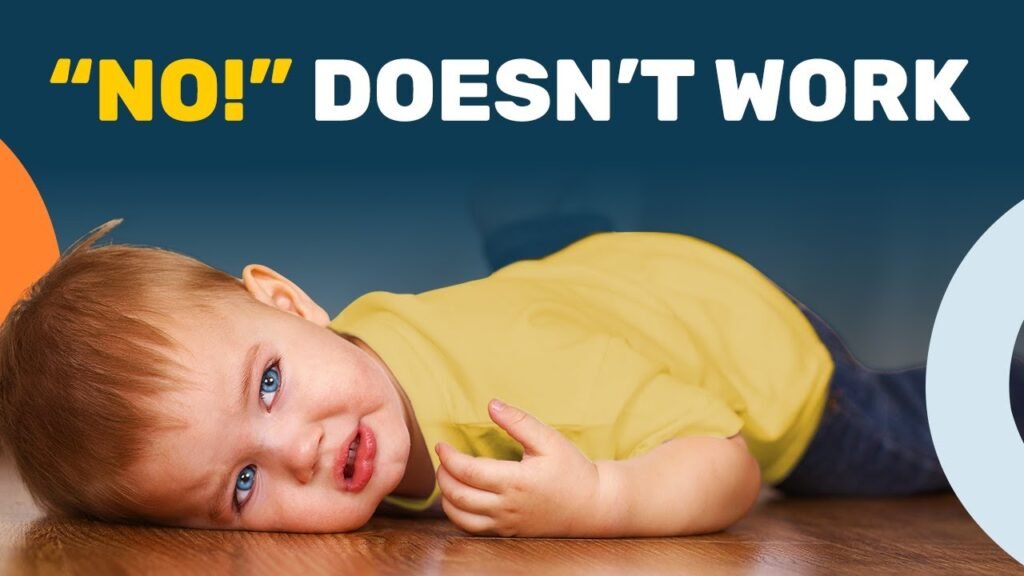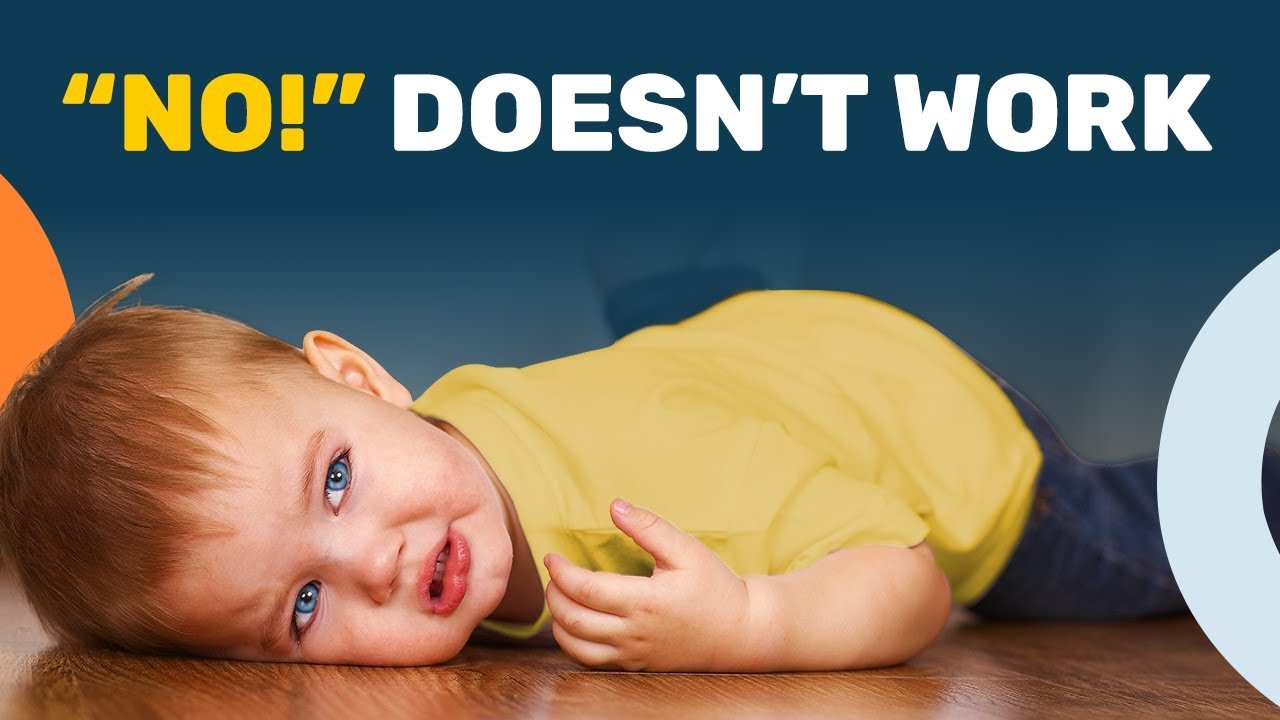Life with a toddler can be a rollercoaster. One minute they’re happy and laughing, the next they’re screaming on the floor. Two minutes later they’re all cuddly and lovely and then before you know it they’re throwing everything out of the drawers refusing to listen when you say stop. It can be really hard but there are a few things that you can do to make it much easier and less stressful. So you can enjoy more of those wonderful moments and have fewer of those tear your hair out moments.
These tips will help you manage challenging toddler behavior (including reducing the frequency of tantrums) and also help make life with a toddler in the house a little less stressful. As always, I hope you find this video helpful! 📱 Follow me on Instagram: /brightest.beginning #emmahubbard #toddlerdevelopment #toddlertantrums Disclaimer: The content on this channel is not intended to be a substitute for professional medical advice and should not be relied on as health or personal advice. If you have any questions or concerns about the health of your child, yourself, or a family member, always seek guidance from your doctor or a qualified health professional. The content on this channel does not substitute, supersede, or replace the advice of a medical professional. Never disregard the advice of a medical professional or delay seeking professional medical advice because of something you have seen on this channel. If you are in any way concerned that you or a person in your care may be experiencing a medical emergency, call the relevant emergency services in your area immediately. External (outbound) links found on this channel, or resources, websites, or other content sources mentioned by this channel are not endorsed by this channel (Emma Hubbard) or its owner (Hubbard Digital Pty. Ltd.) in any way. Under no circumstances is Emma Hubbard or Hubbard Digital Pty. Ltd. responsible for the claims of third-party content providers, websites, or educational providers. If you wish to seek clarification on the above matters please contact Hubbard Digital Pty. Ltd. via the contact email on this channel.
Creating a Safe and Engaging Environment
1.1 Setting up a ‘Yes Space’
Life with a toddler can be both exciting and challenging. One minute they’re happy and laughing, and the next they’re throwing a tantrum on the floor. It’s important to create a safe and engaging environment for your toddler to play and explore freely. This is where the concept of a ‘Yes Space’ comes into play. A ‘Yes Space’ is a designated area in your home where your toddler can play and explore without constant supervision. By toddler-proofing this space and removing any potential dangers, you can provide a safe environment for your little one to learn and grow. This means removing anything breakable or dangerous out of reach and setting up baby gates or using a playpen if necessary. Although it may require some adjustments to your home, creating a ‘Yes Space’ will give your toddler the freedom to explore and play without constantly being told what not to do, reducing frustration for both of you.
1.2 Rotating Toys
It’s no secret that toddlers can get easily bored with their toys. Instead of constantly buying new toys, a simple and effective solution is to rotate their toys regularly. The idea is to have a set of toys available for your toddler to play with at a given time, while the rest are stored away out of sight. Watch for signs that your toddler is getting bored with their current toys, such as playing more roughly than usual or complaining more often. When you notice these signs, it’s time to swap out the toys. By rotating their toys in this way, it creates a sense of novelty and excitement for your toddler, making playtime more engaging and eliminating the need for constantly buying new toys.
1.3 Providing Sensory Experiences
Sensory experiences play a crucial role in your toddler’s development and can help them explore and understand the world around them. By providing opportunities for sensory play, you are engaging their senses and stimulating their cognitive and motor skills. This can be as simple as incorporating different textures, colors, and sounds into their playtime. For example, you can create sensory bins filled with materials like rice, pasta, or sand for them to explore. You can also introduce them to different art materials like playdough, finger paints, or sensory balls. By incorporating sensory experiences into their daily routine, you are not only providing a fun and engaging environment but also supporting their overall development.
Effective Communication Strategies
2.1 Focusing on Positive Instructions
When communicating with your toddler, it’s essential to focus on positive instructions rather than constantly telling them what not to do. Toddlers find it easier to understand and follow instructions when they are framed in a positive way. For example, instead of saying “Don’t run,” you can say “Please walk indoors.” By providing clear and positive instructions, you are removing the guesswork for your toddler and making it easier for them to understand what is expected of them. This approach not only improves communication but also boosts their self-esteem and reduces frustrations.

2.2 Using Clear and Simple Language
Toddlers are still developing their language skills, so it’s crucial to use clear and simple language when communicating with them. Avoid using complex sentences or unfamiliar vocabulary that may confuse them. Instead, use short and simple phrases that they can easily understand. For example, instead of saying “We need to leave the playground now,” you can say “It’s time to go home.” Using gestures and facial expressions can also help reinforce your message and make it easier for your toddler to understand. By using clear and simple language, you are promoting effective communication and ensuring that your toddler understands what you are trying to convey.
2.3 Active Listening and Empathy
Listening is a vital component of effective communication. When your toddler is expressing their emotions or needs, it’s essential to actively listen and show empathy. This means giving your undivided attention, maintaining eye contact, and acknowledging their feelings. Reflecting back what your toddler is saying and validating their emotions can help them feel understood and supported. For example, if your toddler says, “I don’t want to go to bed,” you can respond with, “I understand that you don’t want to go to bed, but it’s time to rest and recharge for tomorrow.” By practicing active listening and empathy, you are fostering a strong bond with your toddler and promoting positive communication.
Managing Transitions and Preventing Tantrums
3.1 Preparing Toddlers for Transitions
Transitions can be challenging for toddlers, as they involve stopping an activity and shifting their attention to something else. To make transitions easier for your toddler, it’s important to prepare them in advance. This means letting them know ahead of time when it’s time to change activities. You can use natural breaks within an activity to signal the end, such as finishing a show or completing a meal. By using these natural breaks, your toddler will be more prepared and cooperative when it’s time to transition. For example, you can say, “After your show, it’s time for lunch.” By providing clear indications and allowing your toddler to mentally prepare for the change, you can minimize resistance and tantrums during transitions.
3.2 Using Natural Breaks or Timers
In addition to preparing your toddler for transitions, using natural breaks or timers can further aid in managing transitions. Natural breaks are pauses or endpoints within an activity that can serve as a signal for your toddler to move on to the next activity. For example, if your toddler is engaged in a puzzle, finishing the puzzle can serve as a natural break before moving on to something else. Alternatively, you can use timers to visually represent the passage of time. This can be done using kitchen timers, sand timers, or timers on your phone. By showing your toddler what time looks like, they can better understand the concept and be more prepared for transitions.
3.3 Providing Clear Indications of Activity Endings
When it’s time to end an activity, it’s important to provide clear indications to your toddler. Abruptly ending an activity without any warning can lead to frustration and tantrums. Instead, give your toddler a countdown or a specific number of times they can participate before the activity ends. For example, you can say, “We will go down the slide three more times, and then it’s time to leave the playground.” By providing clear indications of activity endings, your toddler will have a better understanding of what to expect, reducing meltdowns and making transitions smoother.
Handling Tantrums and Meltdowns
4.1 Understanding the Cause of Tantrums
Tantrums are a normal part of toddlerhood, and it’s essential to understand their underlying causes. Tantrums often occur when toddlers are overwhelmed, frustrated, or unable to express their emotions effectively. It’s important to remember that tantrums are not a result of deliberate misbehavior but rather a sign that your toddler is struggling to cope with their big feelings. By understanding the cause of tantrums, you can respond with empathy and support, rather than resorting to punishment or privilege removal.
4.2 Avoiding Punishment and Privilege Removal
When faced with a tantrum, it’s important to avoid punishment or removing privileges as a means of discipline. Punishment and privilege removal do not effectively teach children how to behave better or regulate their emotions. Instead, they can lead to a strained parent-child relationship and may further escalate the tantrum. Instead, focus on providing support, comfort, and understanding during tantrums. Validate your toddler’s feelings and provide a calm and soothing presence. By responding with empathy and support, you can help your toddler navigate their emotions and learn healthy ways of coping.
4.3 Teaching Emotional Regulation Techniques
Teaching your toddler emotional regulation techniques is a proactive approach to managing tantrums and meltdowns. Start by modeling healthy emotional regulation yourself, as children learn best by observing others. Teach your toddler simple techniques such as taking deep breaths, counting to ten, or using a calming sensory toy. Encourage them to use these techniques when they feel overwhelmed or frustrated. By providing your toddler with tools to manage their emotions, you are empowering them and imparting valuable skills that they can carry with them into adulthood.
Conclusion
Parenting a toddler can be both rewarding and challenging. By creating a safe and engaging environment, using effective communication strategies, managing transitions, and handling tantrums with empathy and support, you can navigate the ups and downs of toddlerhood with confidence. Remember to be patient with yourself and your child, as parenting is a continuous learning journey. By implementing these strategies, you will not only create a positive and nurturing environment for your toddler but also strengthen your bond and create lasting memories together.

